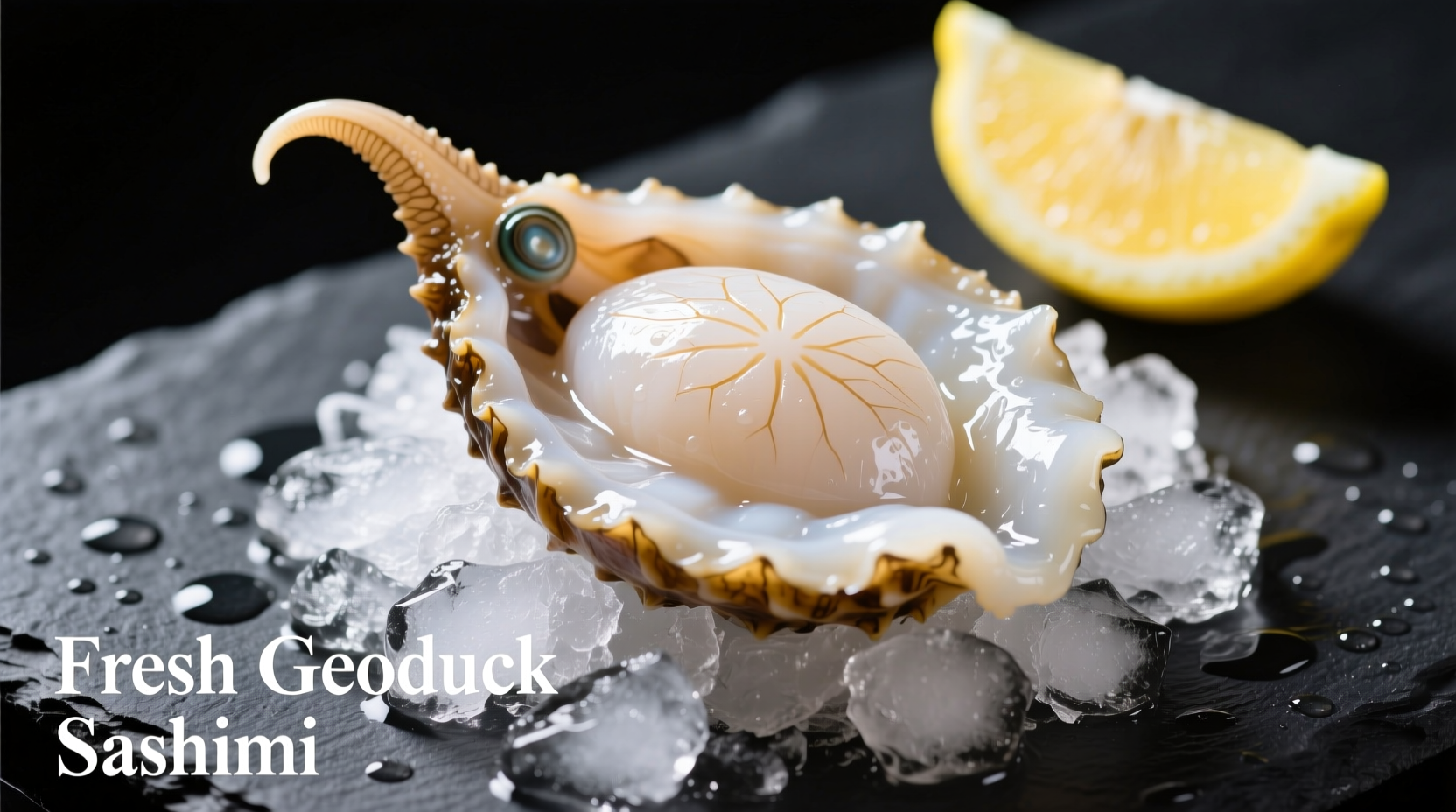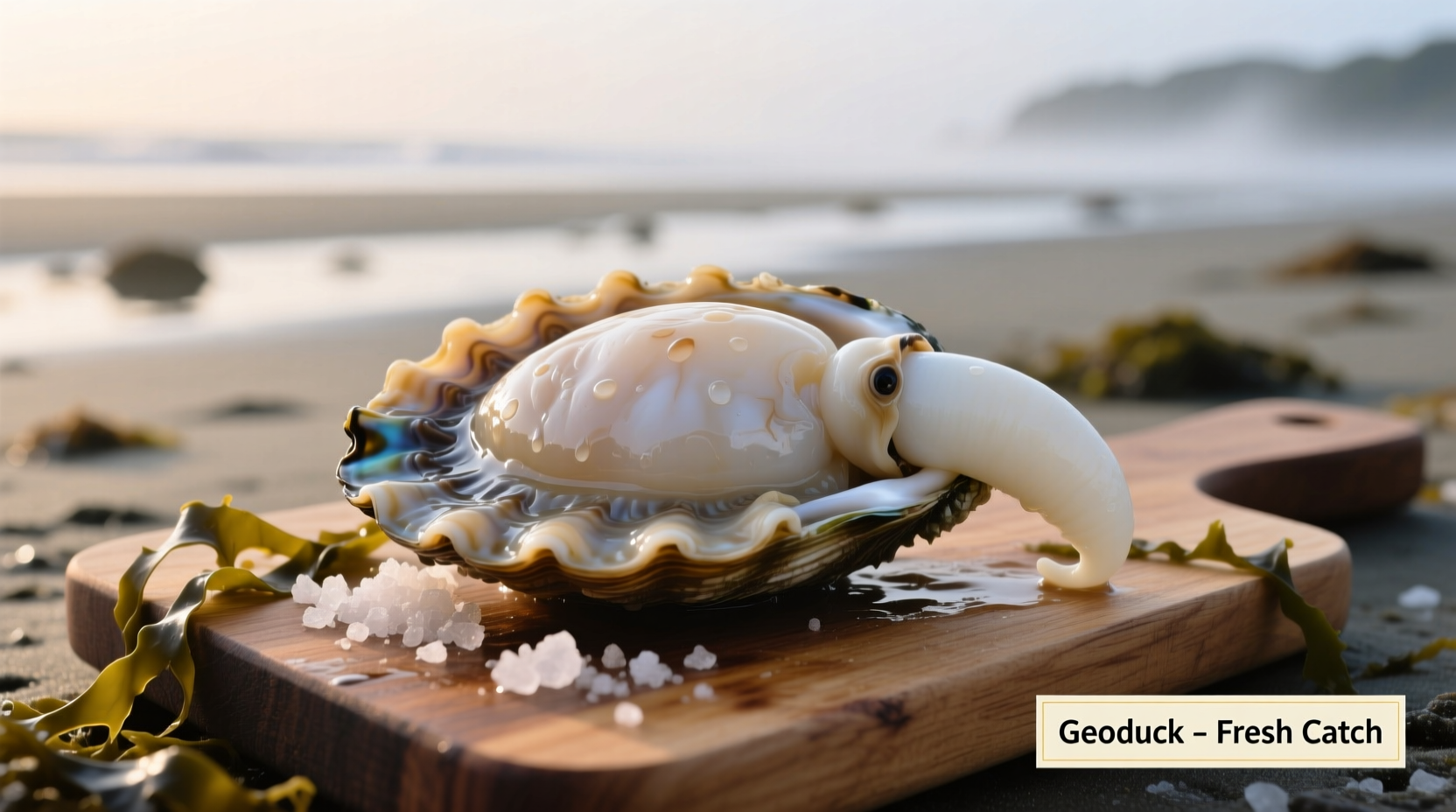If you've ever wondered what does geoduck taste like, you're not alone. This Pacific Northwest specialty confuses many first-time tasters with its unusual appearance, but its flavor profile is remarkably approachable. As a culinary professional who's worked with geoduck across fine dining and casual seafood settings, I can confirm this giant clam delivers a surprisingly delicate eating experience that appeals even to those typically hesitant about shellfish.
Understanding Geoduck: More Than Just a Strange-Looking Clam
Before diving into taste specifics, it's helpful to understand what geoduck (Panopea generosa) actually is. Native to the Pacific Northwest, this burrowing clam holds the record as the world's largest siphon clam, with some specimens weighing over 15 pounds. Despite its phallic appearance that often draws giggles, geoduck has been prized for centuries by Indigenous communities and is now celebrated in high-end restaurants worldwide.
Breaking Down the Geoduck Taste Experience
When evaluating what geoduck tastes like, we need to consider both texture and flavor components separately, as different parts offer distinct experiences:
Texture Profile: Crisp Yet Tender
The geoduck's siphon (the long 'trunk' portion) provides a unique textural experience:
- Siphon: Crisp, almost apple-like crunch when raw, becoming tender-crisp when lightly cooked
- Belly: Softer, more traditional clam texture
- Mantle: Delicate, slightly chewy with a melt-in-your-mouth quality
This textural complexity explains why chefs prize geoduck for dishes requiring varied mouthfeel. Unlike tougher clams that need prolonged cooking, geoduck's texture shines with minimal preparation.
Flavor Notes: Sweetness Without Overpowering Brininess
When describing what does geoduck taste like in flavor terms, three characteristics stand out:
| Seafood Type | Sweetness Level | Brininess | Aftertaste |
|---|---|---|---|
| Geoduck | High | Mild | Clean, slightly sweet |
| Manila Clam | Moderate | Moderate | Slightly metallic |
| Scallop | High | Very Mild | Buttery |
| Oyster | Low-Moderate | Strong | Mineral-heavy |
According to NOAA's Pacific Marine Fisheries documentation, geoduck's mild flavor profile stems from its deep-burrowing nature and diet of clean, filtered plankton. Unlike surface-dwelling shellfish that absorb stronger tidal flavors, geoduck lives buried 3 feet deep in pristine sand, resulting in remarkably clean-tasting meat.

Factors That Influence Geoduck Flavor
Several elements affect what geoduck tastes like in your specific experience:
Freshness Matters Most
Unlike many seafood varieties that benefit from slight aging, geoduck must be consumed within 24-48 hours of harvest for optimal flavor. The Washington Department of Fish and Wildlife notes that geoduck begins losing its signature sweetness after just 72 hours out of water. This explains why many East Coast restaurants struggle to replicate the authentic Pacific Northwest geoduck experience—the journey time affects quality.
Preparation Techniques
How you prepare geoduck dramatically impacts its taste profile:
- Raw (sashimi): Maximizes natural sweetness and crisp texture
- Quick-seared: Develops subtle caramelization while maintaining tenderness
- Boiled: Best for chowders where it absorbs surrounding flavors
- Overcooked: Becomes tough and loses distinctive sweetness
Chef William Wei of Seattle's acclaimed Marine Seattle confirms that "the secret to perfect geoduck is treating it like scallops—not clams. Thirty seconds in hot oil preserves its delicate flavor, while overcooking destroys what makes it special."
Perfect Pairings: Enhancing Geoduck's Natural Flavor
Understanding what does geoduck taste like helps determine ideal accompaniments:
Best Flavor Companions
- Lemon or yuzu for brightness
- Light ponzu or soy-based dipping sauces
- Chili threads for subtle heat
- Cucumber for textural contrast
- Micro cilantro for aromatic balance
What to Avoid
Geoduck's delicate flavor gets overwhelmed by:
- Heavy cream sauces
- Strongly flavored seafood stocks
- Excessive garlic or onion
- Long marinating times
Common Misconceptions About Geoduck Taste
Several myths persist about what geoduck tastes like:
Myth: It Tastes Fishy or Strong
Reality: Geoduck has less brininess than most clams and virtually no fishiness. Its flavor is closer to sweet scallops than traditional clams.
Myth: The Texture Is Rubbery
Reality: Properly prepared geoduck has a pleasing crisp-tender texture. Toughness only occurs with overcooking—a common mistake among inexperienced handlers.
Myth: It Tastes Like Regular Clams
Reality: While related to clams, geoduck offers a distinctly sweeter, cleaner profile. As culinary researcher Dr. Elena Rodriguez notes in her Journal of Sensory Studies analysis, "geoduck's amino acid composition differs significantly from Mercenaria species, resulting in measurable umami enhancement without accompanying bitterness."
Where to Experience Authentic Geoduck
For the most accurate understanding of what does geoduck taste like, consider these options:
- Pacific Northwest restaurants: Particularly Seattle, Vancouver, and Puget Sound area establishments
- Fresh harvest experiences: Guided clam digging tours in Washington state
- Asian markets: High-end Japanese and Korean restaurants often feature premium geoduck
Remember that frozen or shipped geoduck rarely delivers the authentic taste experience. The University of Washington's School of Aquatic and Fishery Sciences confirms that flash-frozen geoduck loses approximately 30% of its natural sweetness compounds during thawing.
Final Taste Verdict: Why Geoduck Deserves Your Attention
So, what does geoduck taste like in the simplest terms? Imagine the sweetest part of a scallop combined with the clean finish of a high-quality oyster, but with a satisfying crisp texture all its own. This unique combination explains why geoduck has become a staple in top seafood restaurants from Tokyo to Paris.
Whether you're a seafood enthusiast or someone who typically avoids shellfish, geoduck offers a gateway to appreciating bivalves without overwhelming flavors or textures. Its mild profile makes it an excellent introduction to premium shellfish for beginners while still satisfying discerning palates.











 浙公网安备
33010002000092号
浙公网安备
33010002000092号 浙B2-20120091-4
浙B2-20120091-4